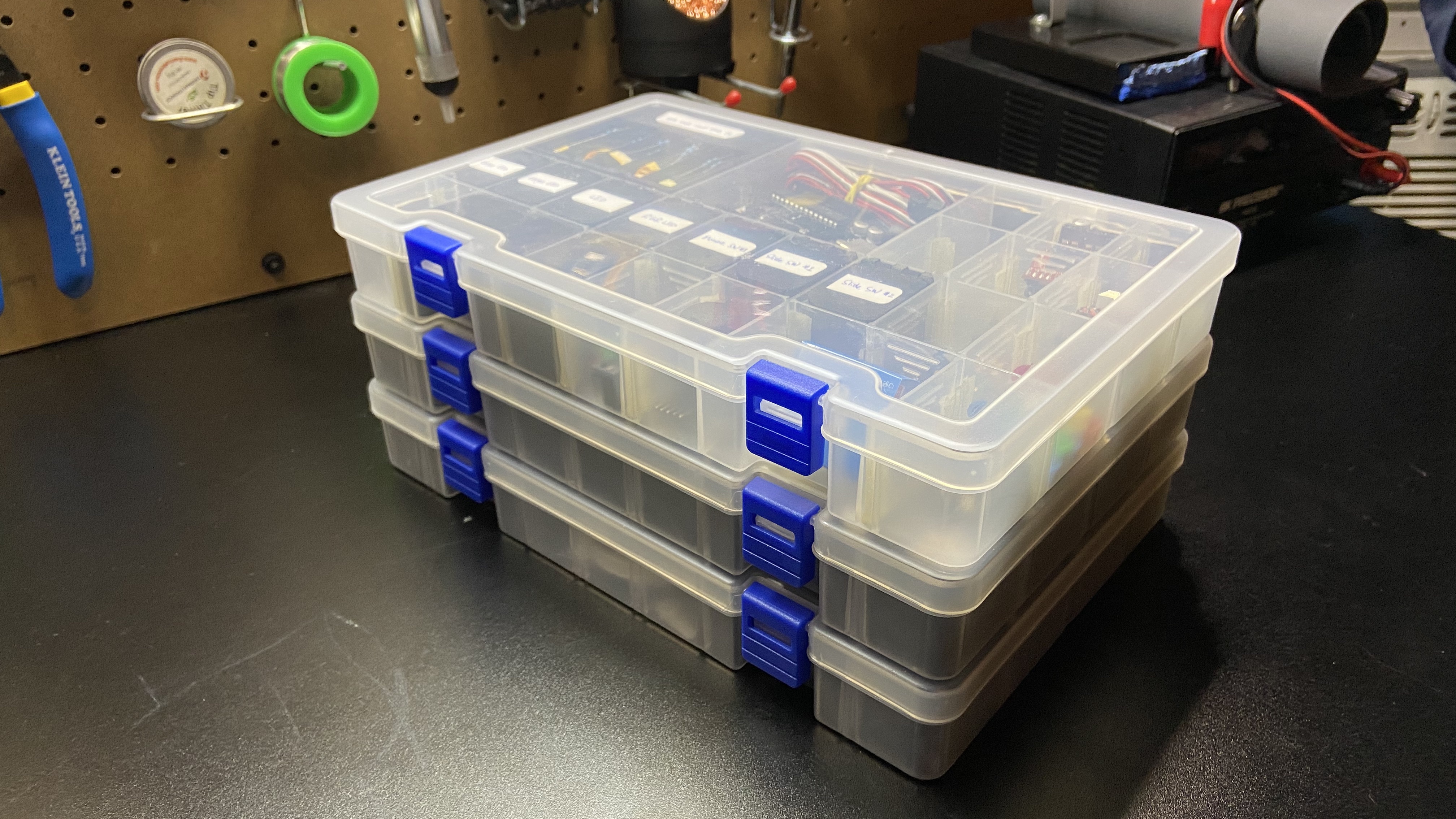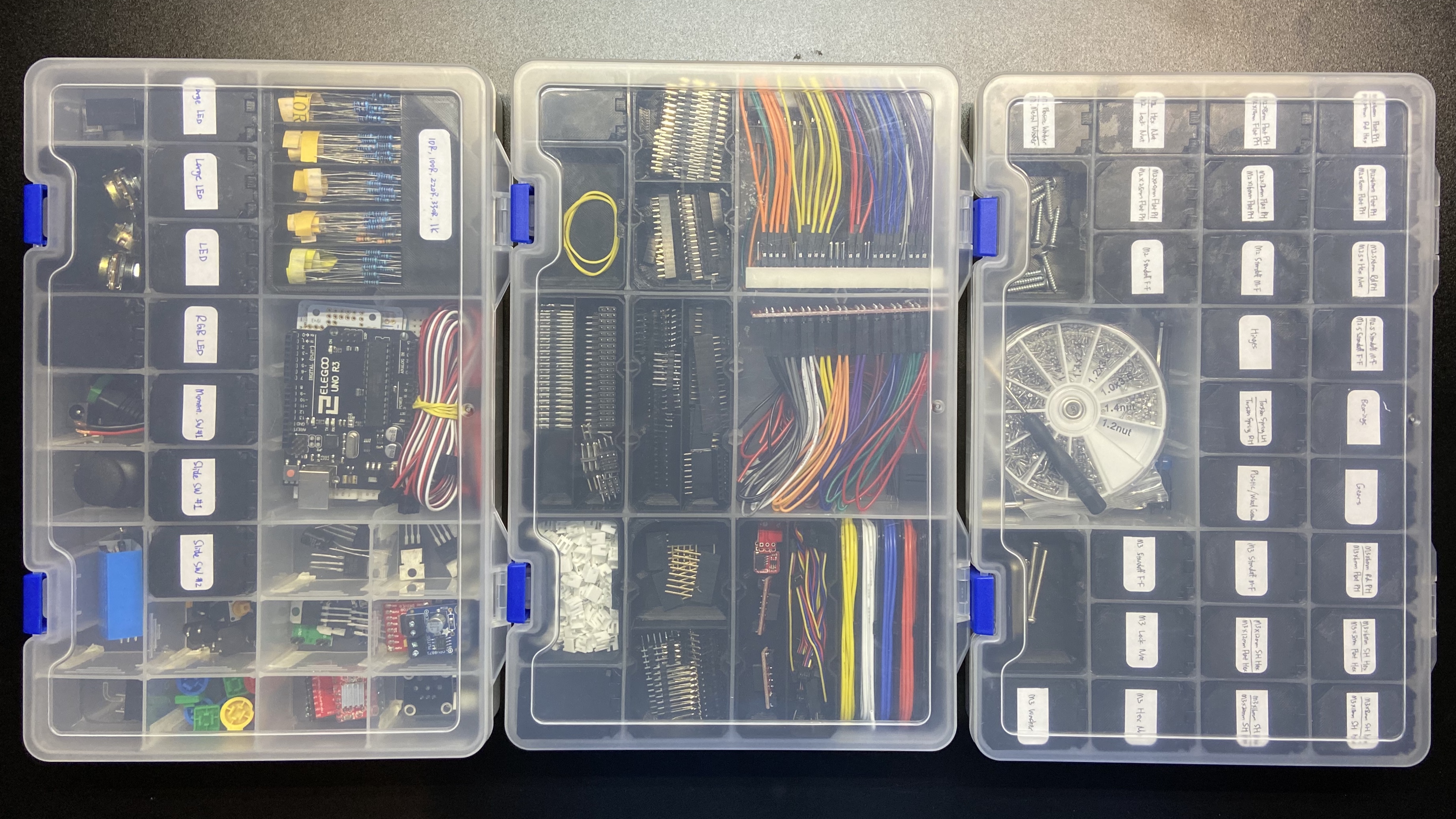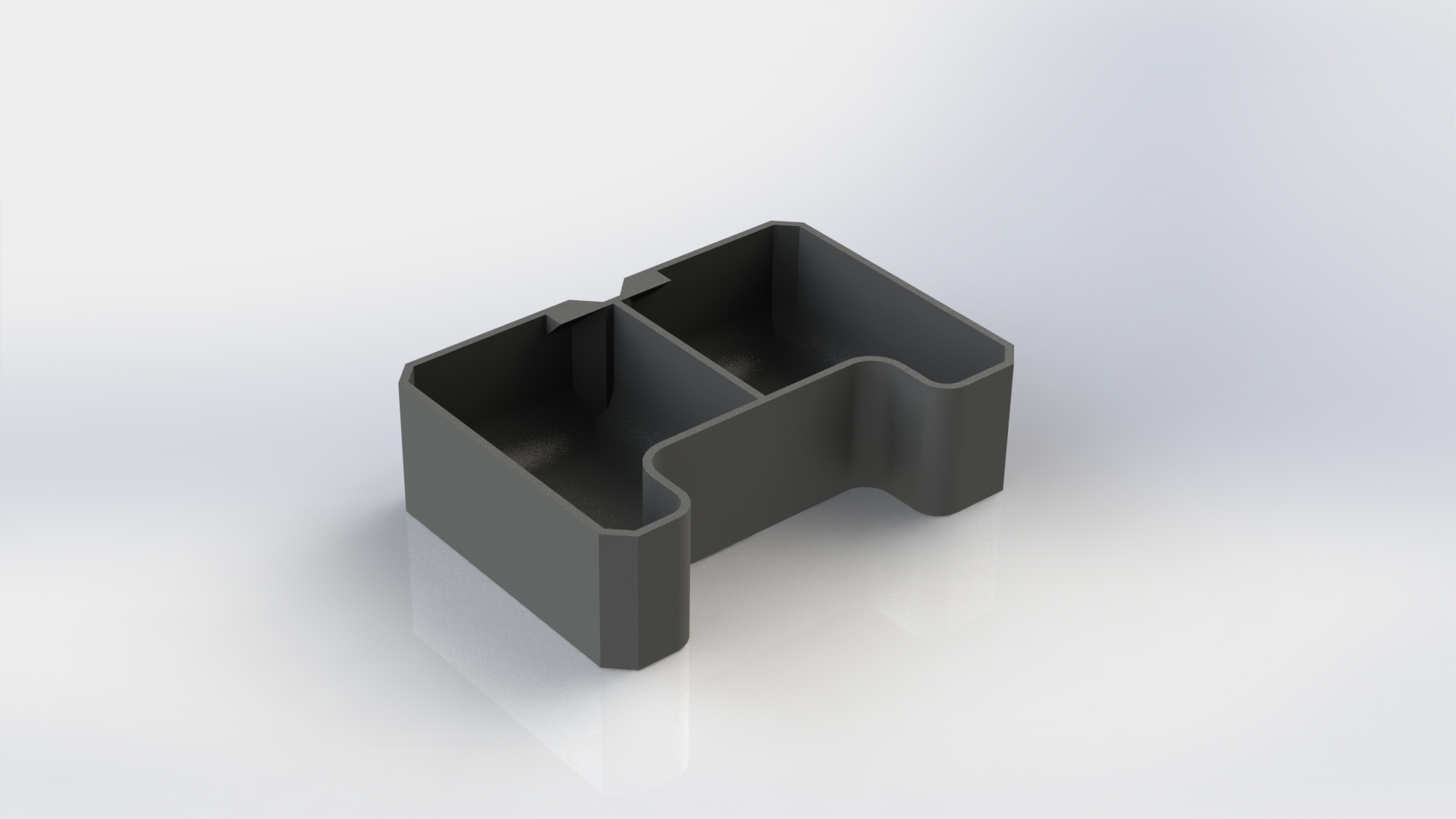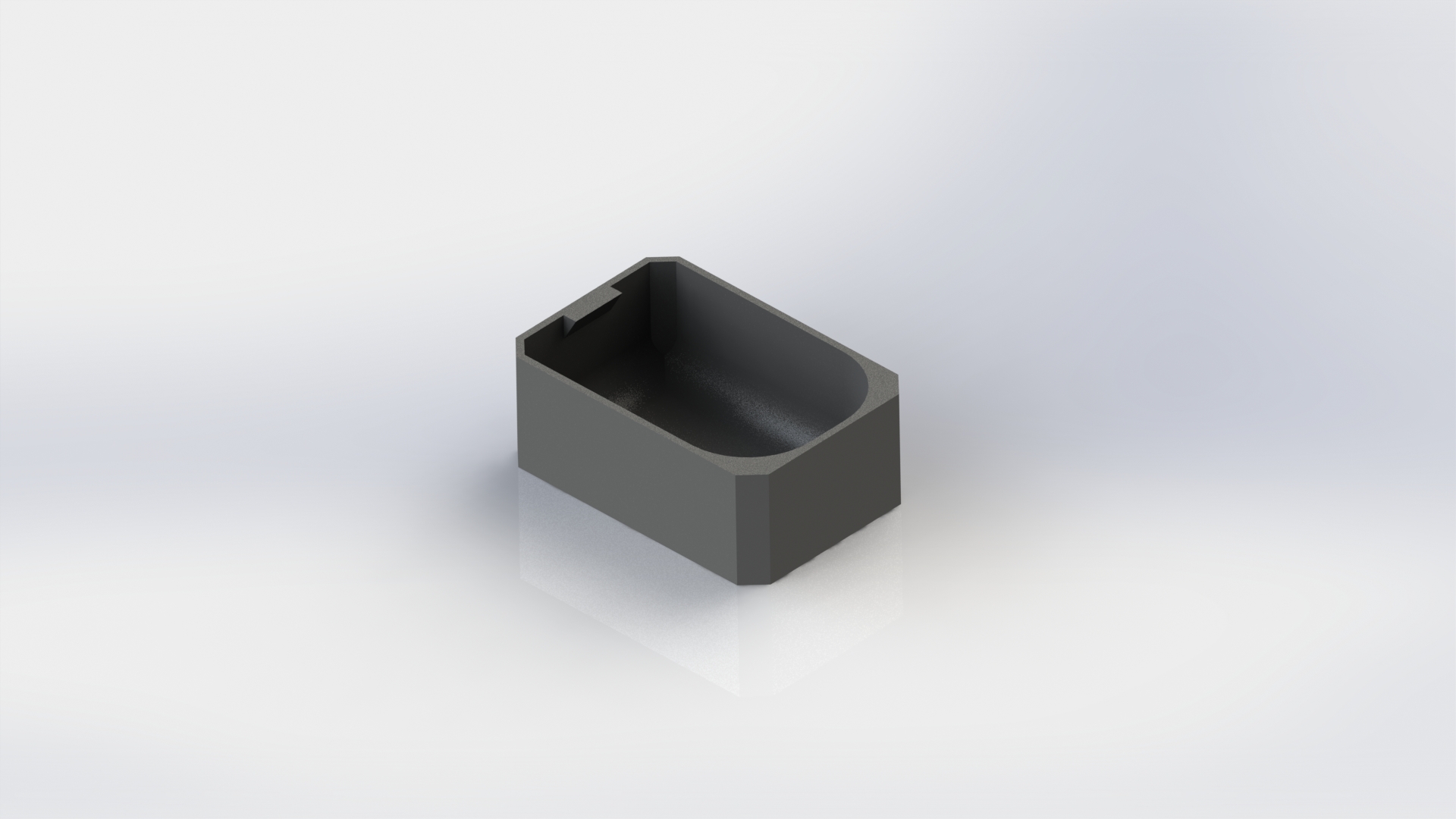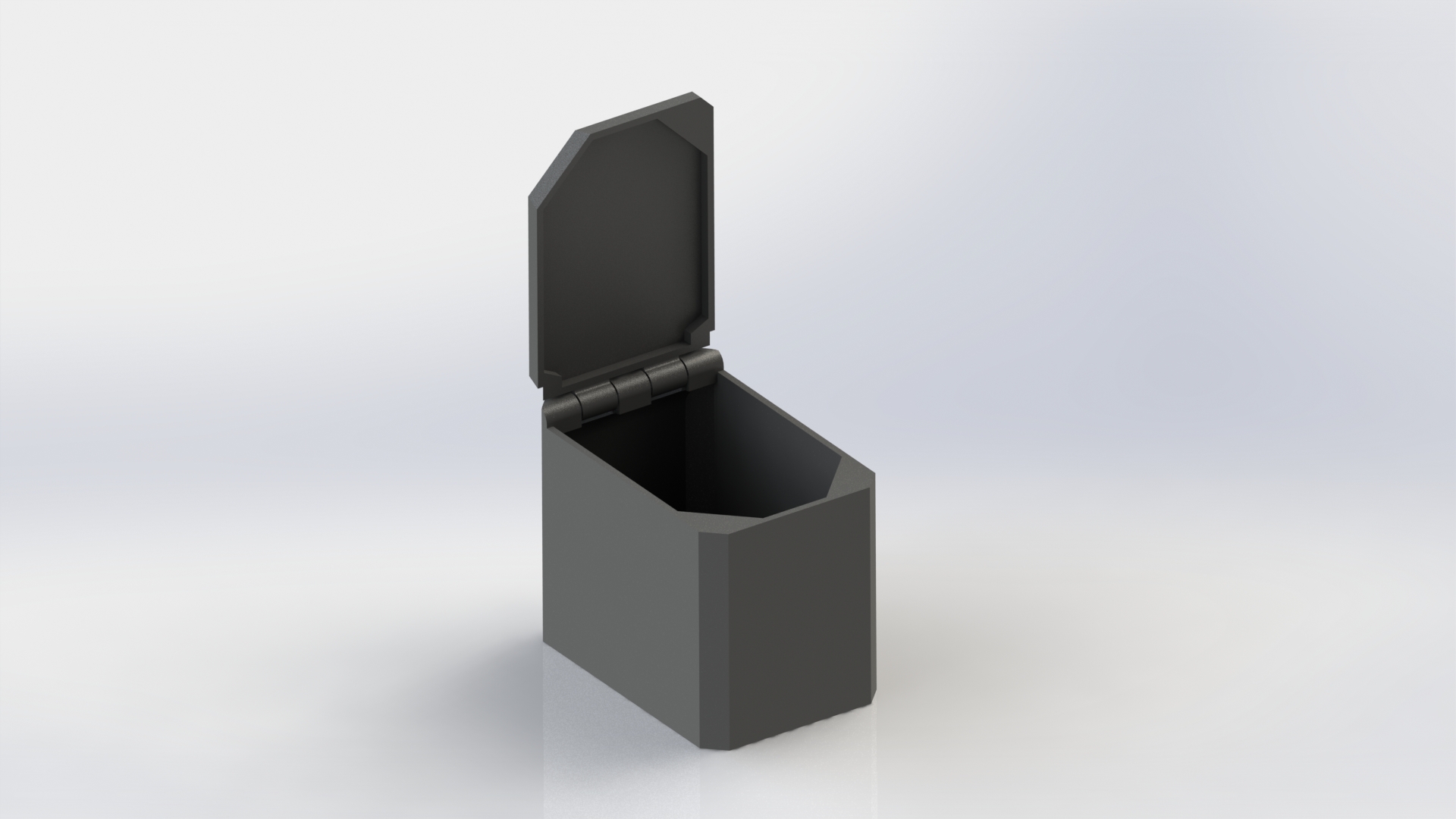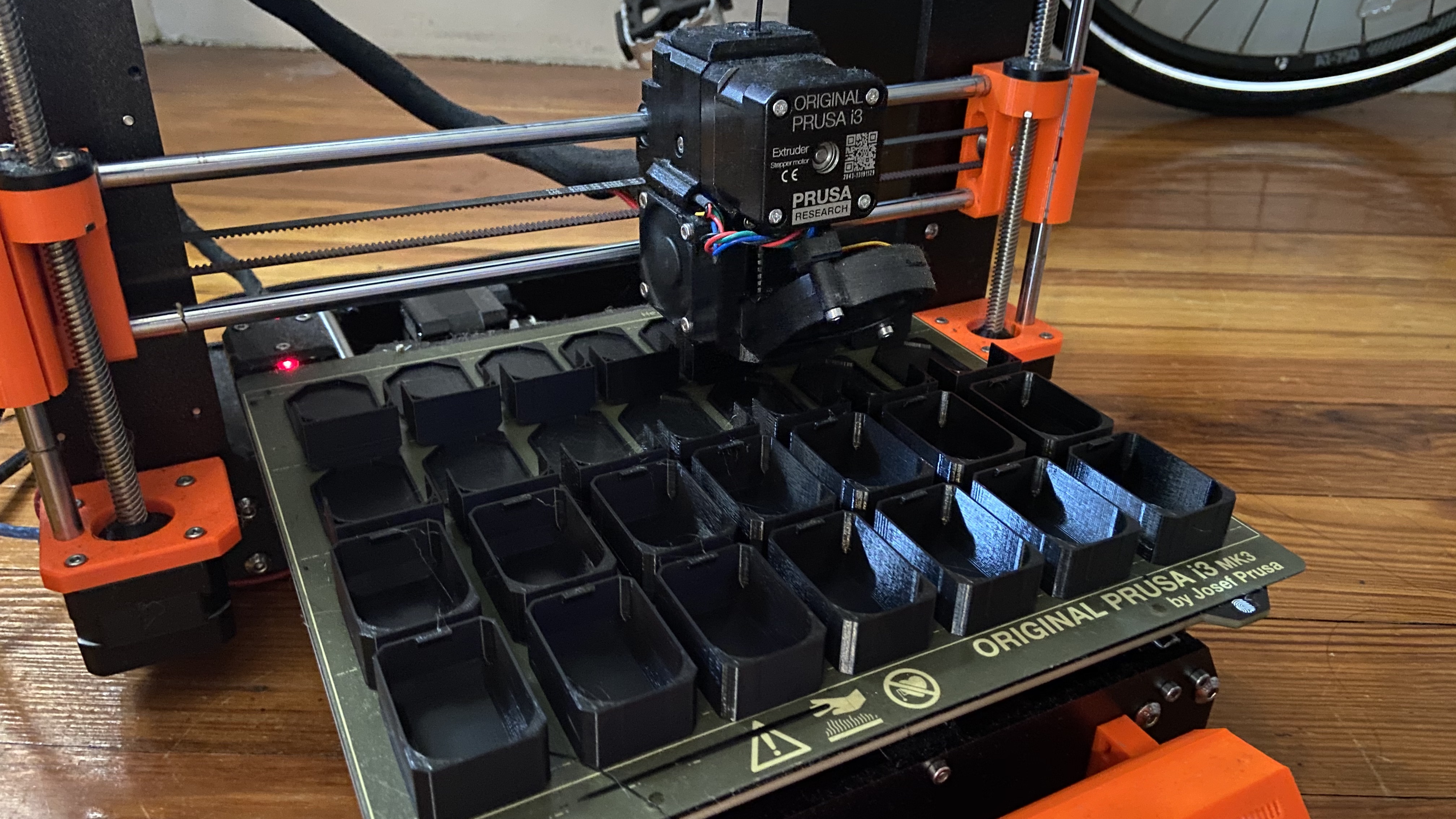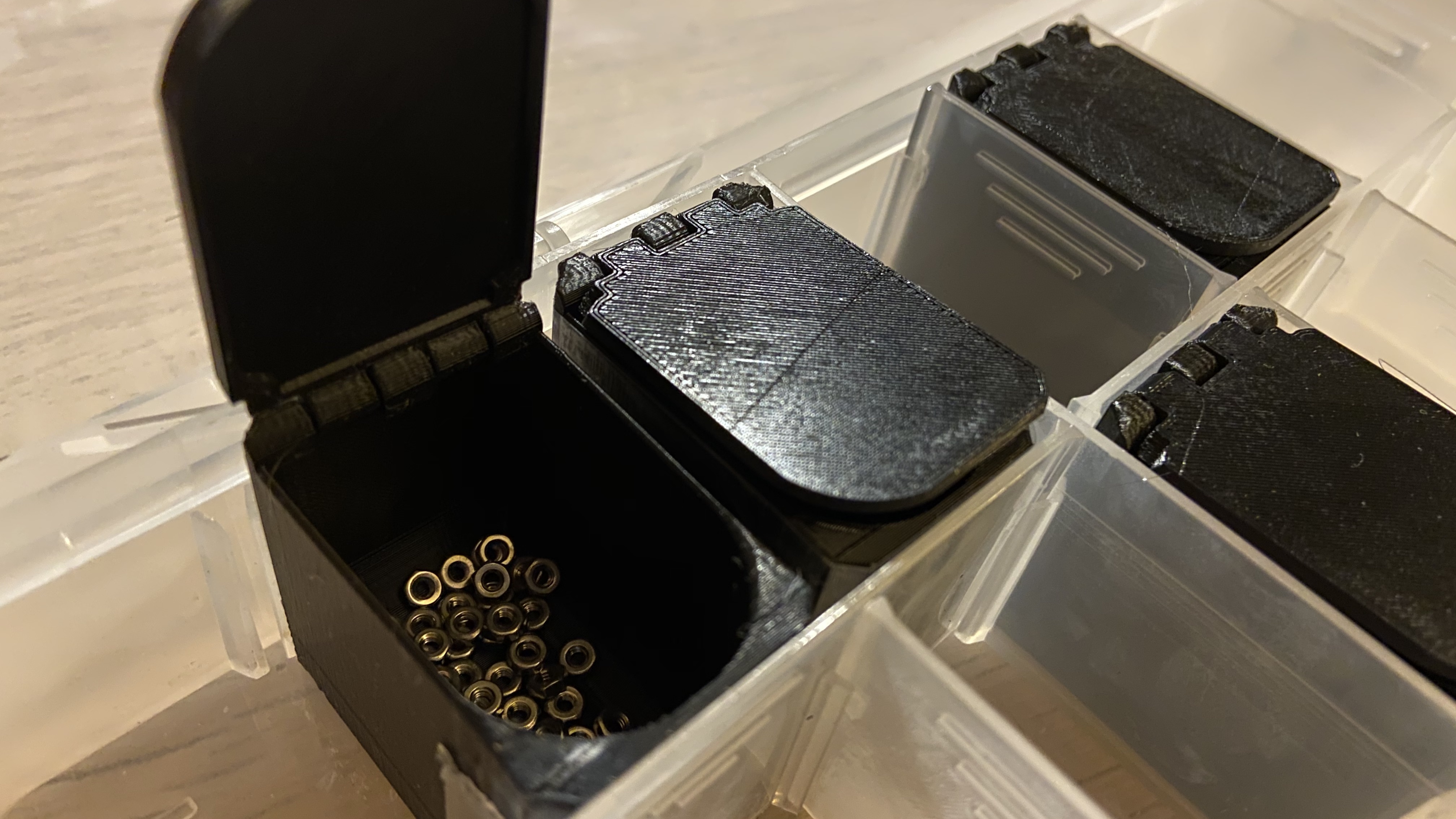Hardware Organization
Due to the ongoing global pandemic, I was stuck at home like many other student makers who use to rely heavily on my university's makerspace. Therefore, I decided to take some time to sort through all of the hardware and materials that I acquired along the years, and see if there exists a perfect system to organize them. I uses 3D-printed boxes to further customize some organization boxes I bought off on Amazon.
Here's the final Product
I managed to put most of my hardware stuff in 3 small boxes (excluding large items like screwdrivers and glue gun, for which I already have another toolbox).
Box 1: M2/M3 Assorted Machine Screws and Other Mechanical Hardware
Full-size boxes to store larger items
Half-size Boxes for Smaller Items
Additional Boxes for Temporary Storage
Box 2: Wires, Headers, and Connectors
Longer Containers to Store Pin Headers
Custom Wrapper to Store Silicone Wires
Storage Solution for Jumper Wires
Box 3: Resistors, Capacitors, and Other Electronics Components
Dividers for Resistors (My Top-10 Popular Resistor Values)
Note: I already have a separate storage box, where I would put more expensive things like batteries, cameras, and Raspberry Pis.
Design Process
I started by going through hardware organization boxes on Amazon. After a while, I made a conclusion that none of the current system matches all of my needs:
- Highly customizable - I need to store things as small as M2 washers and as big as a breadboard.
- Built to survive travel - I want to carry the boxes with my to competitions in the future and don't want my screws and nuts get a well mix during transportation.
- Reasonable price - This one is quite obvious, since I'm still a student and don't currently have a job.
Many of the available options fall into category 2. There are plenty of clear plastic boxes (example image below) online that feature customizable dividers, but to my experience 90% of them tend to get loose over time and allow small things to travel to another compartment quite easily.
In the end, I decided that I will look for a storage box online that satisfies most of my requirements, and 3D print custom compartments to further customize the system to my need. I finally settles down on the following item (link here). It is reasonably cheap (3 for $22 when I purchased it) and the dividers can be customized into compartments as small as 30cm x 42cm (good for small bolts and nuts), and as large as 90cm x 84cm (good for Arduino UNOs, Raspberry Pis, and half-size breadboards).
I then went to Illustrator and made a document where I drew a digital map of the box's layout; then, I carefully sorted out all of my hardware, and played around with the layout until I came up with an optimal placement for everything. Keep in mind that as I proceed to actually placing the hardware, I made some minor changes to the layout due to the difference between my plan and the reality (e.g. one box is not enough for all the M3 nuts I have). I also did not put too much effort into box 3, since there were too many electronics components that it became hard to plan everything ahead - luckily they all worked out in the end.

